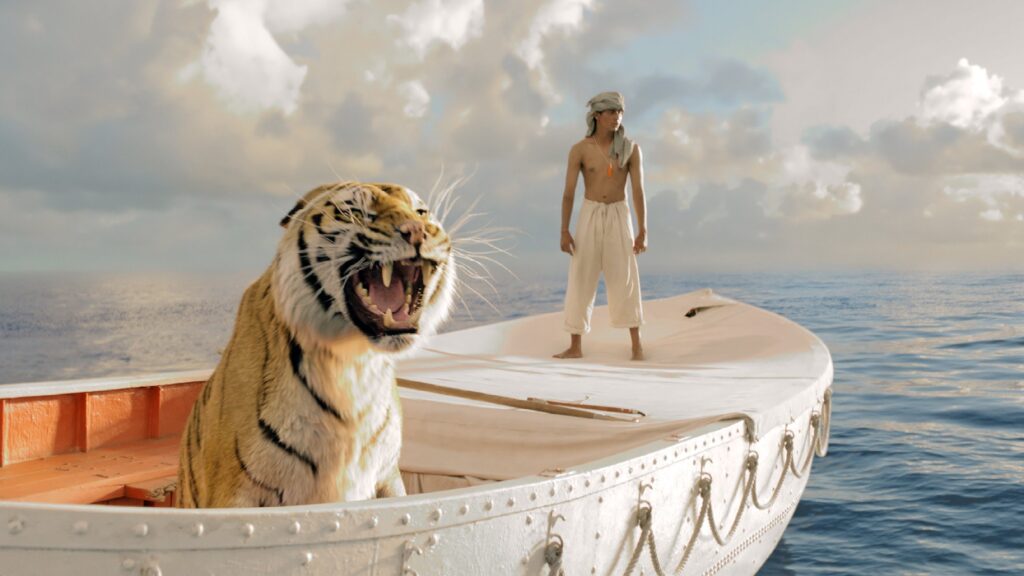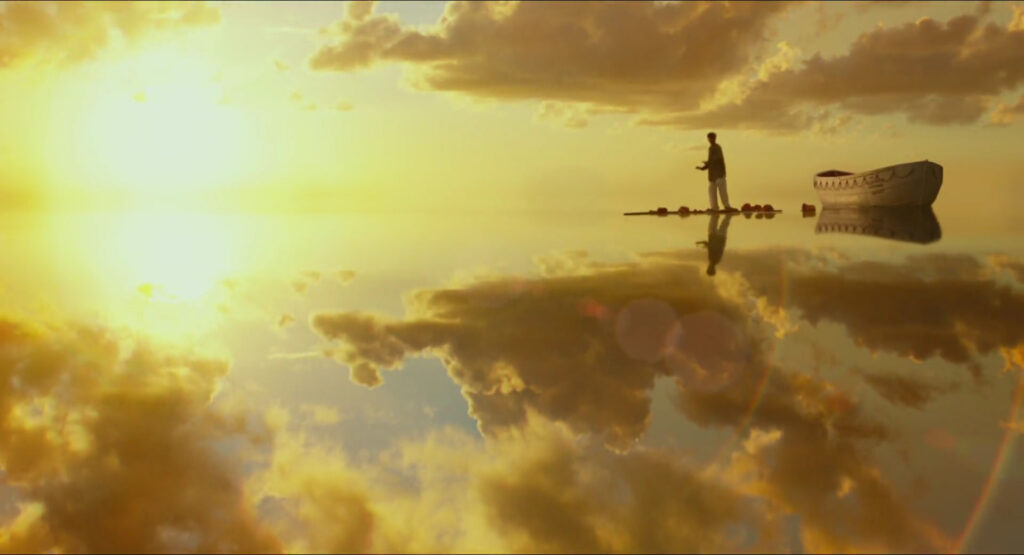Life of Pi is a beautifully shot film that exists somewhere in between the worlds of fantasy and adventure. Adapted from the Yann Mantel novel of the same name, about a young Indian teenager stuck adrift on a raft with a tiger, hyena, orangutan, and zebra, it was considered for years to be utterly unfilmable. Pi finally found its intrepid director in Ang Lee, who decided to shoot digitally and shoot 3D, and the result was a colorful, amazing visual experience that looked nothing like anything that came before it.
Life of Pi Cinematography: Excellence in Visual Storytelling
Life of Pi won the most Oscars in 2012, including Ang Lee for Best Director and Claudio Miranda for Best Cinematography. Chilean-born American cinematographer Miranda was the first Chilean person to win an Academy Award. In addition to Pi, Miranda has worked frequently with David Fincher, including shooting The Curious Case of Benjamin Button, the first movie nominated for the Cinematography Oscar that was shot entirely digitally.
Life of Pi contains a bevy of advanced special effects shots, with a good deal of the movie, including co-protagonist Richard Parker the Tiger, generated by computers. Claudio Miranda had the difficult task of photographing much of a film that didn’t exist in reality yet captured its epic essence in a way that would match the unbelievable CGI being prepared.
Creating the Ocean Setting
Miranda succeeded, marrying the film’s cinematography and special effects in a seamless way that let each enhance one another. At the production’s heart was a massive tank of water replicating the ocean-set scenes. Built inside an abandoned airport, the 1.7 million gallon behemoth was the world’s largest self-generating wave tank. Miranda himself had a hand in its construction, making sure it was built around the lighting needs of his crew. A giant door was even created to allow the actual sunset to light the tank every day at dusk, allowing the indoor ocean to be shot during the magic hour.

The money and effort spent on the tank underlines how important the ocean setting was to Life of Pi. For many film shots, the frame would be almost entirely water. As such, Ang Lee decided to shoot the film in 3D, a technology still unproven and not as well-respected at the time, when Avatar had yet to be released and revolutionized the medium. By adding depth to the image, Lee felt the power of the ocean and the subtleties of its movements could be more accurately captured.
Establishing Realistic Lighting
Because of the prominence of both actual and digitally created water, lighting was especially important to Miranda and the cinematography crew. It was also especially difficult to the particulars of the shoot. With waves and water moving constantly, any light would reflect and refract in every direction. In a wide, flat ocean, with nothing else but the occasional bioluminescent plankton, the sun was the film’s chief source of diegetic light—a huge ball of fire with nothing to obstruct it—constantly dominating the image.
Deferring to his director of photography, Ang Lee asked Miranda to choose the camera the crew would use to shoot the film. Miranda eventually decided to use the Arri Alexa for its high contrast range. Using the Alexa, the crew could create subtleties and grades of shade and light despite the sun’s overpowering presence.

Miranda also used an open shutter for most of the film, allowing more light into the camera for each frame. The result is a smoother, more natural look, closer to how we see the world with our human eyes. This made it easier for the audience to watch the moving water for an extended period of time and allowed them to follow the images in the fast-cut, chaotic action setpieces. The last thing Ang Lee wanted was for his audience to get seasick while watching his film, and a wide-open shutter was a smart way to prevent that.
Excel in Cinematography at NYFA
While many of Life of Pi’s most remarkable images were animated on a computer, they would have felt false and out of place if not for the efforts of Ang Lee, Claudio Miranda, and the cinematography team to photograph everything in a seamless, logical fashion. By combining both the magic and science of the movies, the filmmakers behind Life of Pi manage to make fantasy come to life.
From documentaries to music videos to capstone projects, our cinematography programs teach the discipline with a hands-on approach, offering various assignments for prospective cinematographers. Learn more about our program curriculums on our Cinematography programs page.